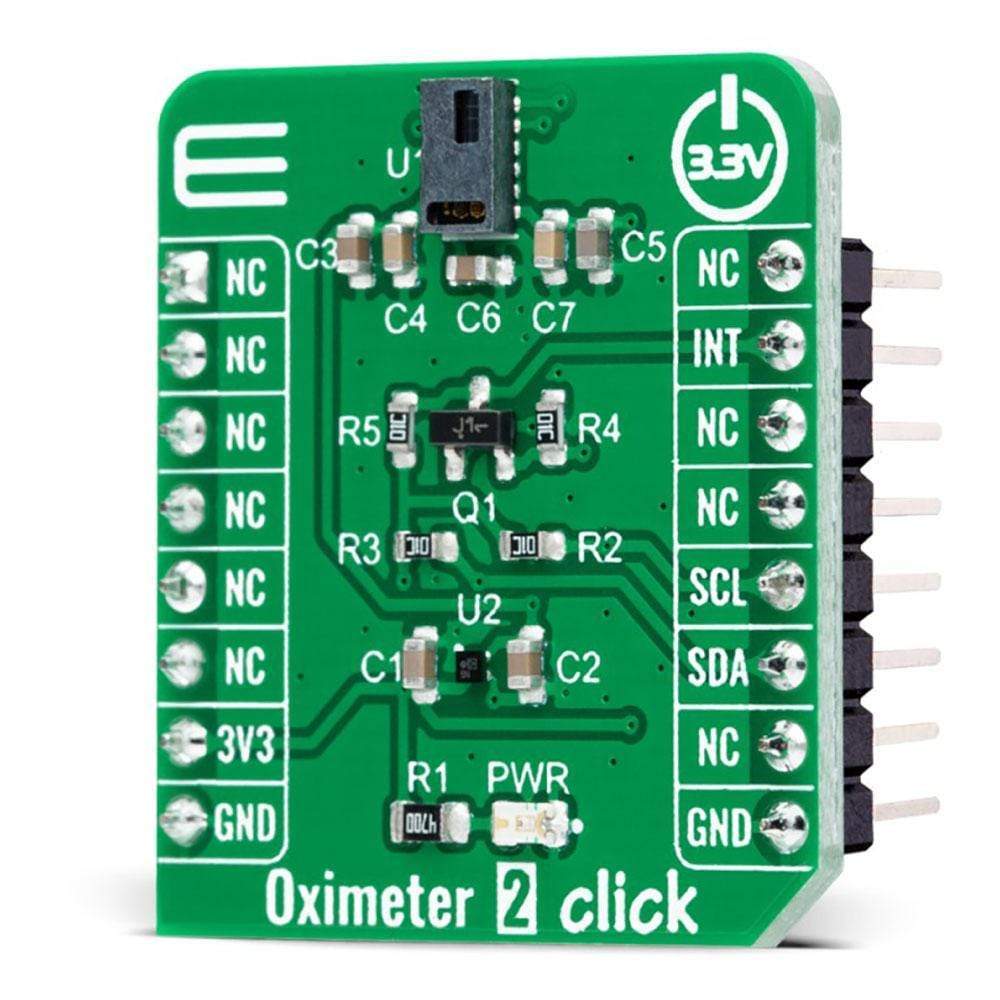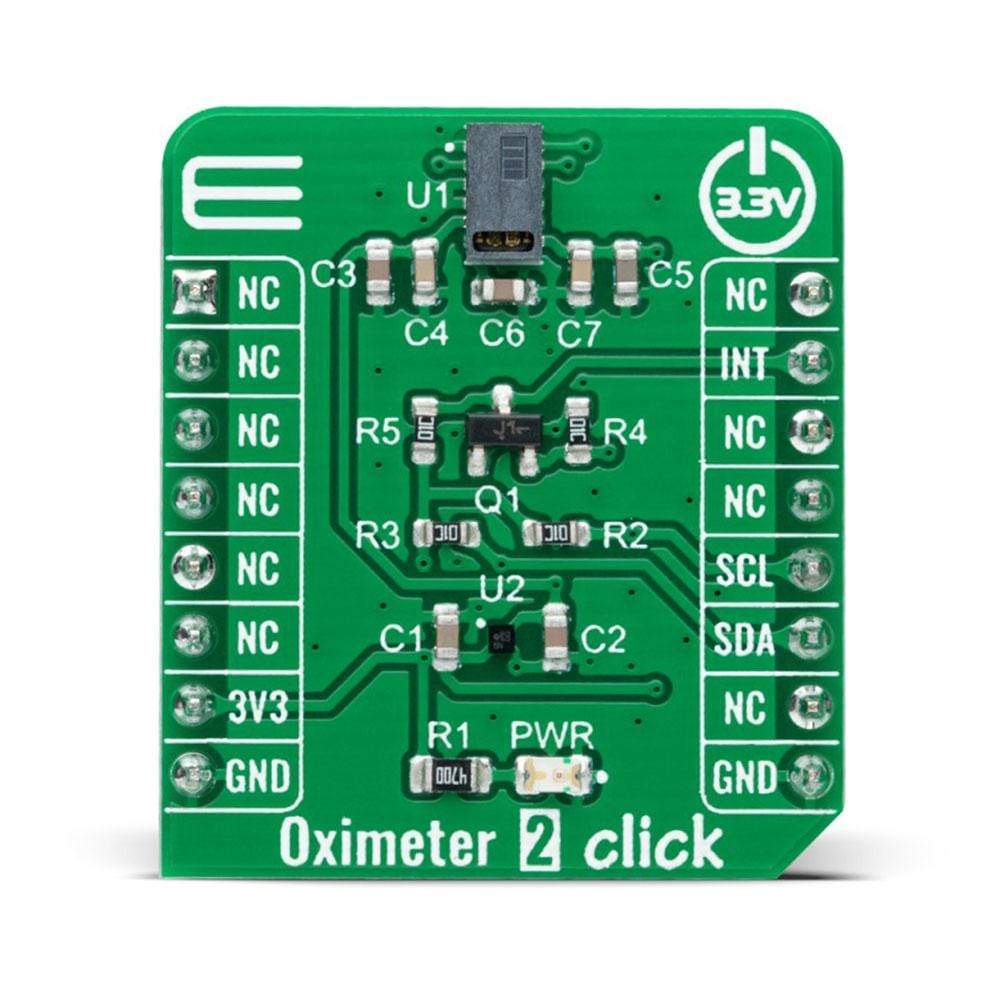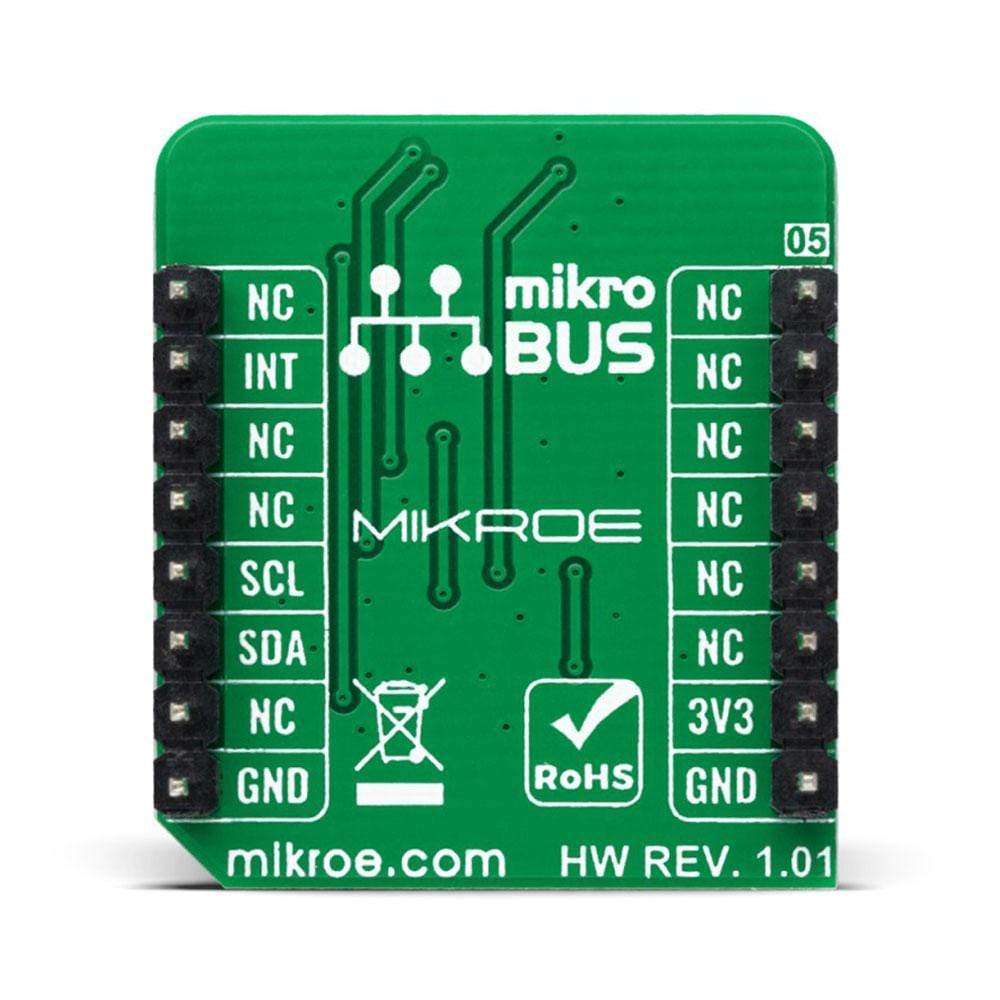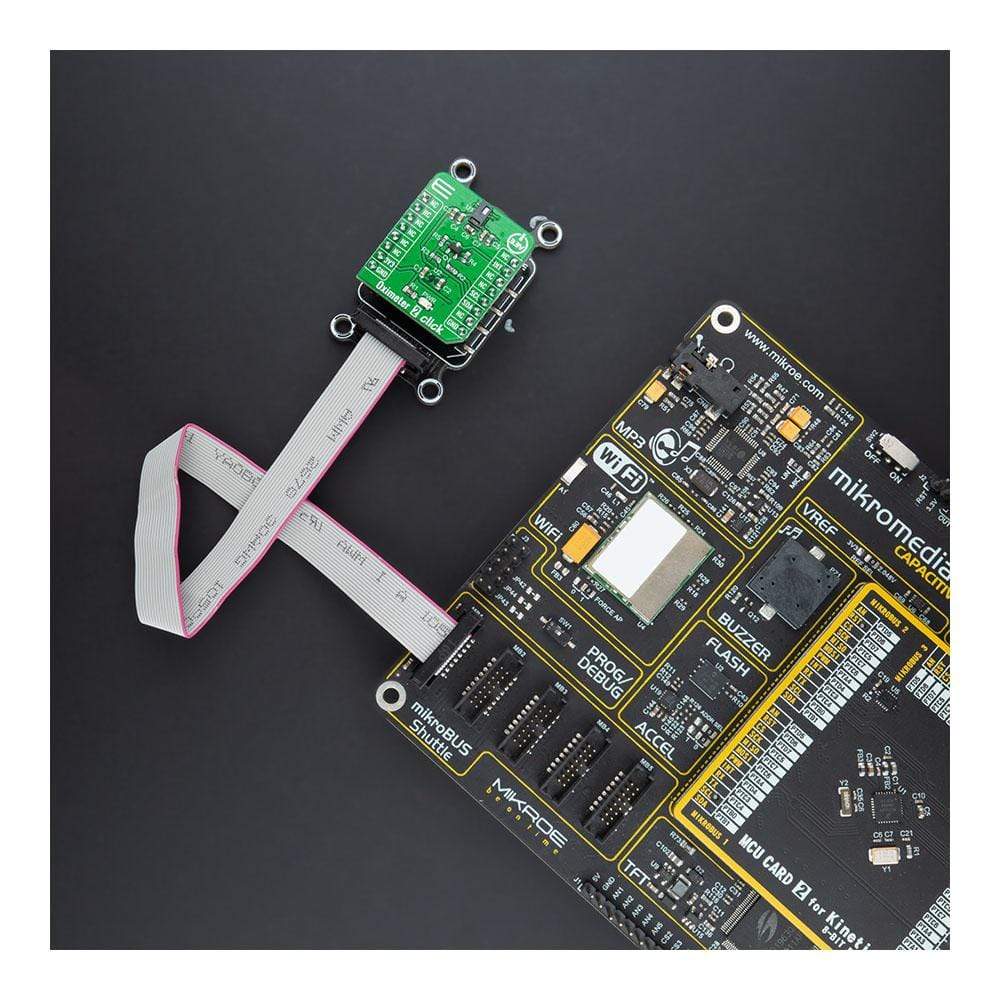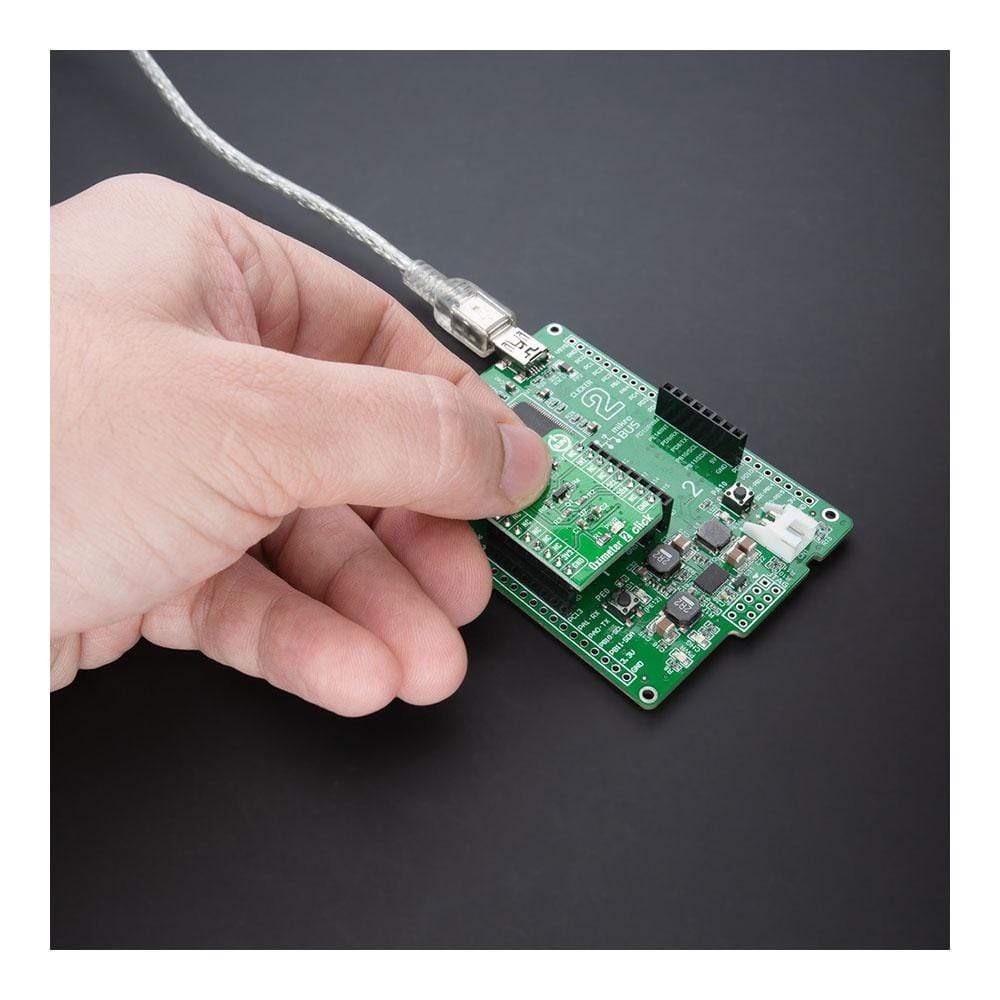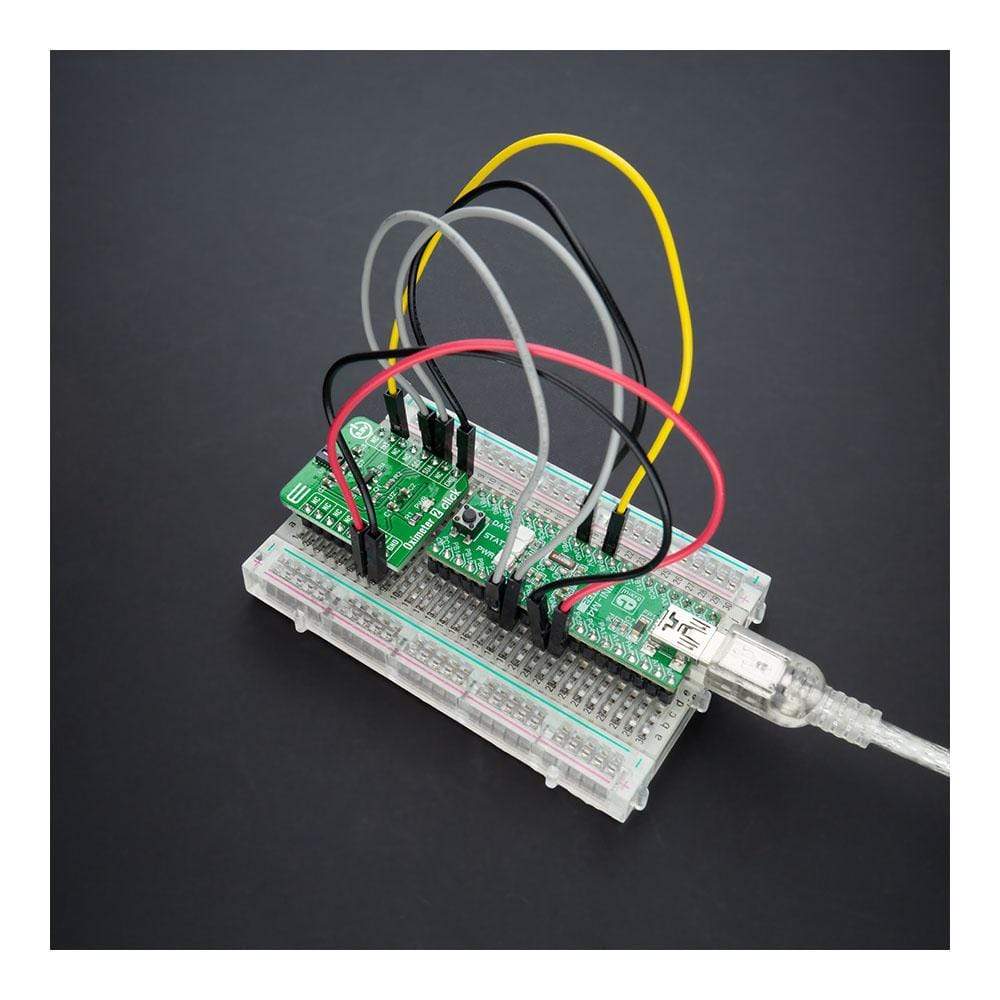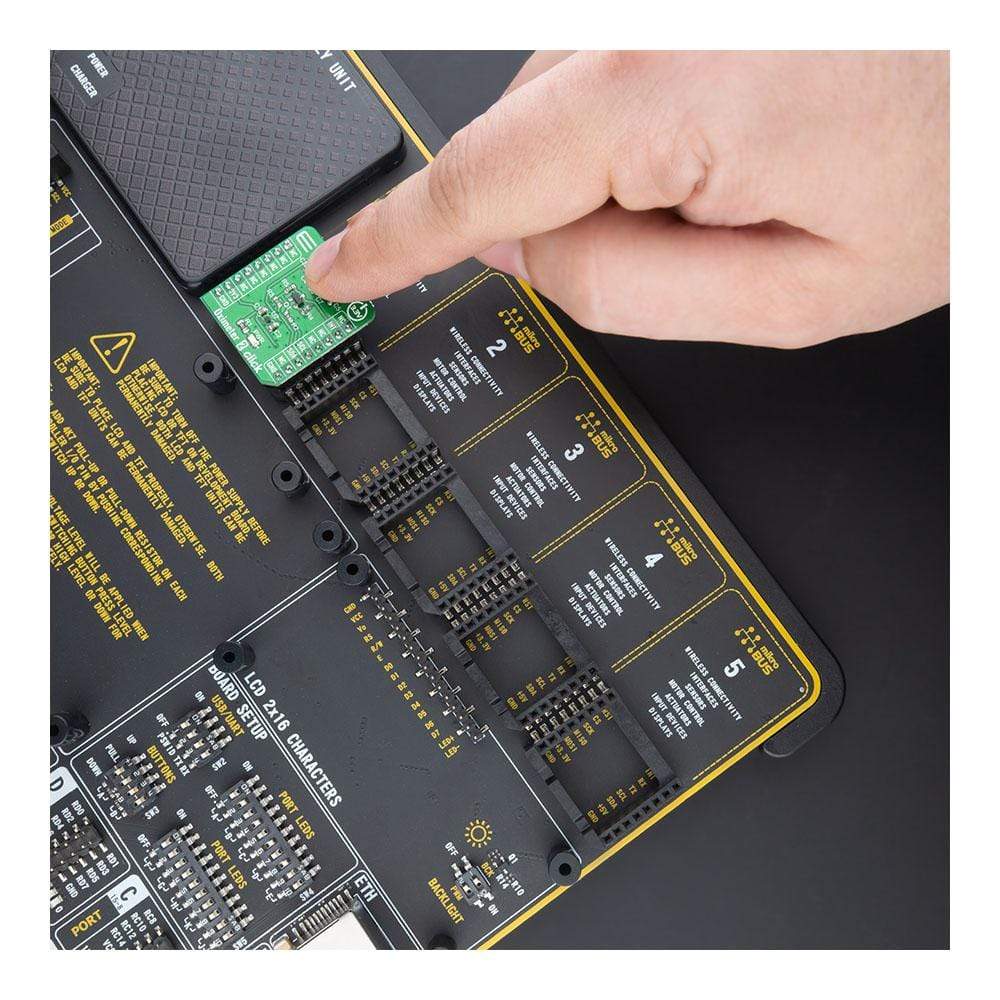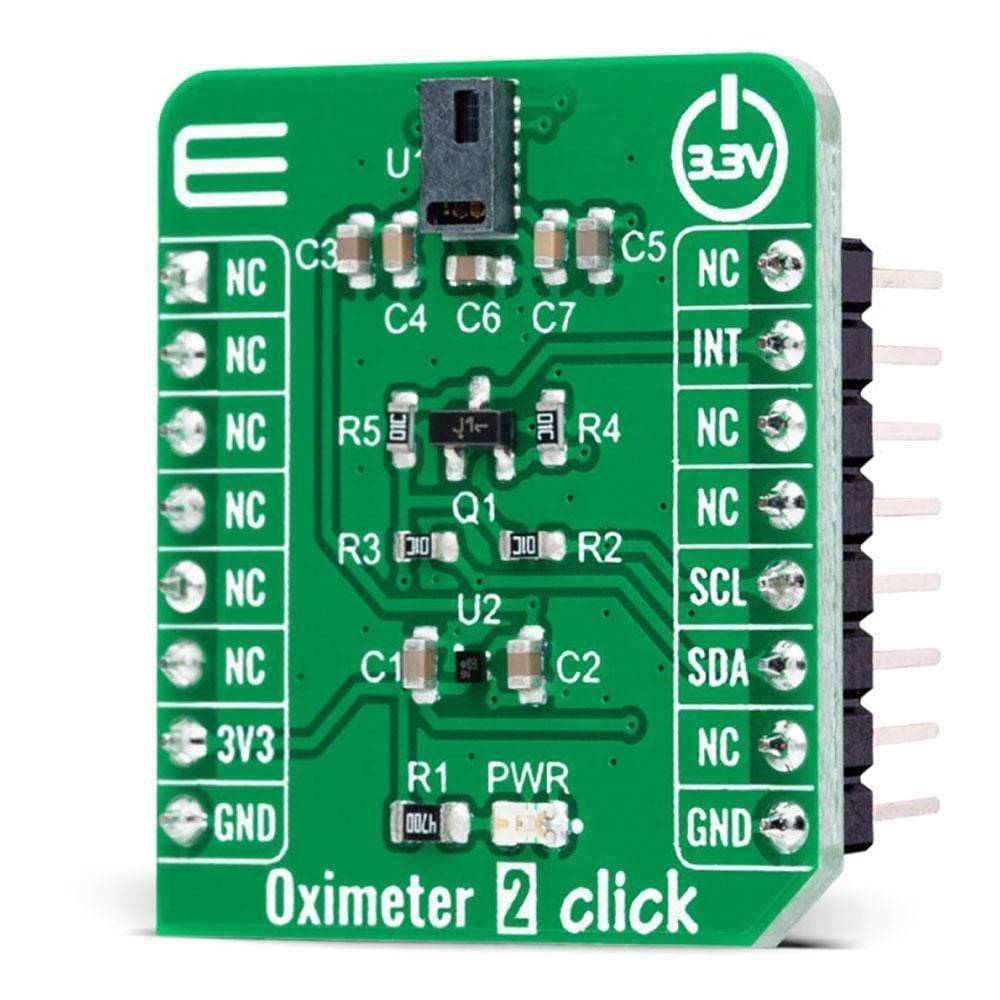
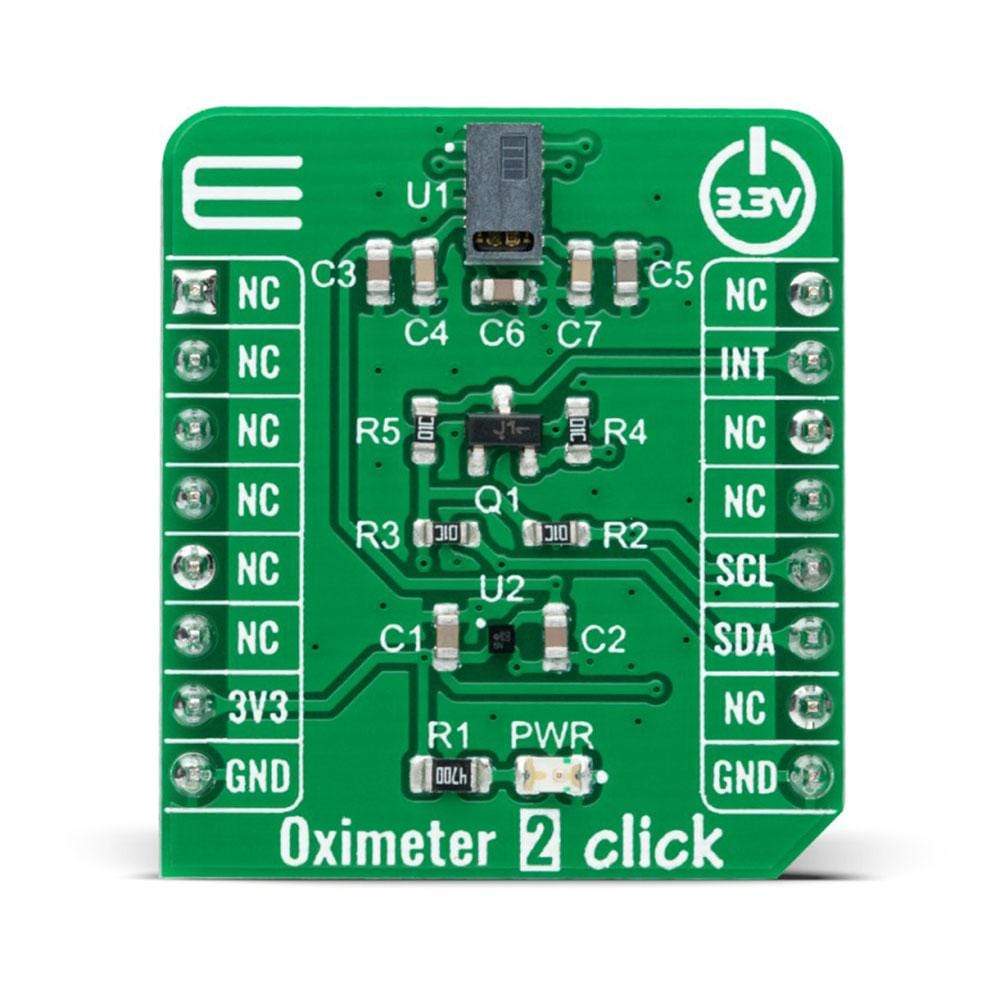
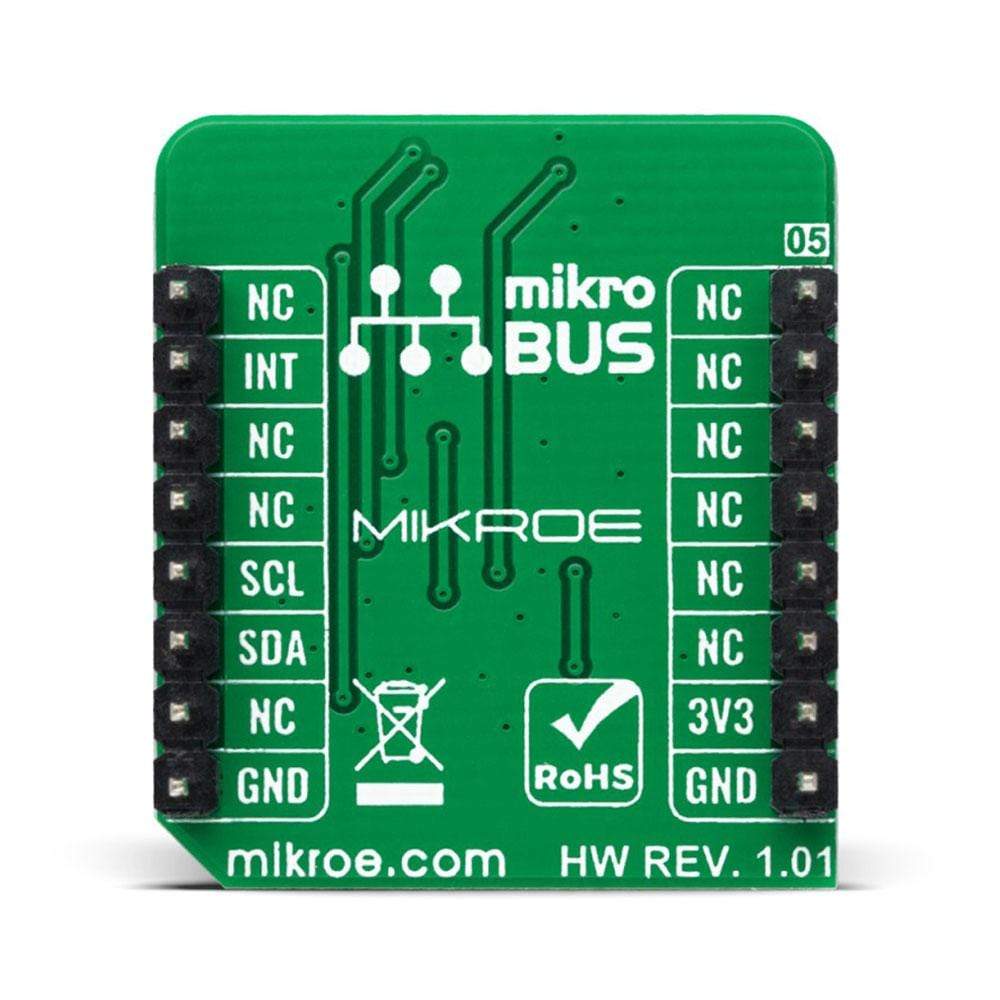
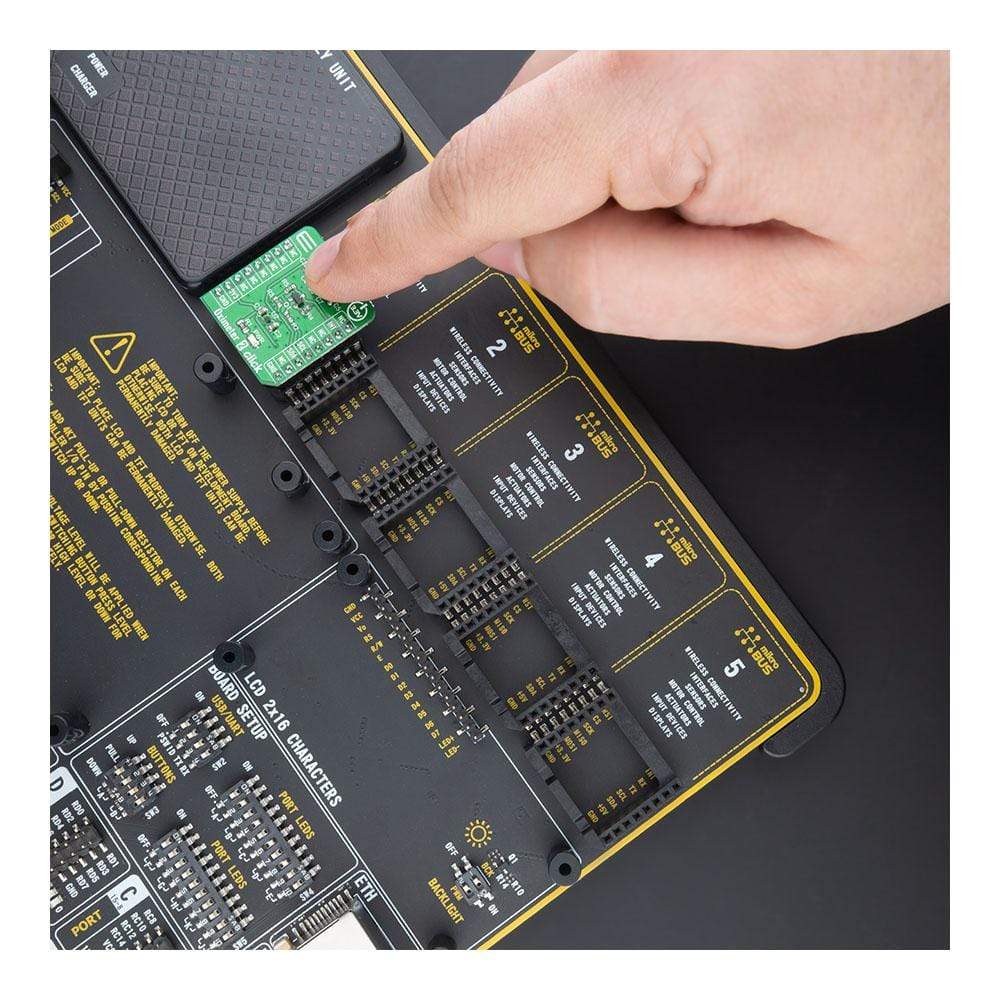
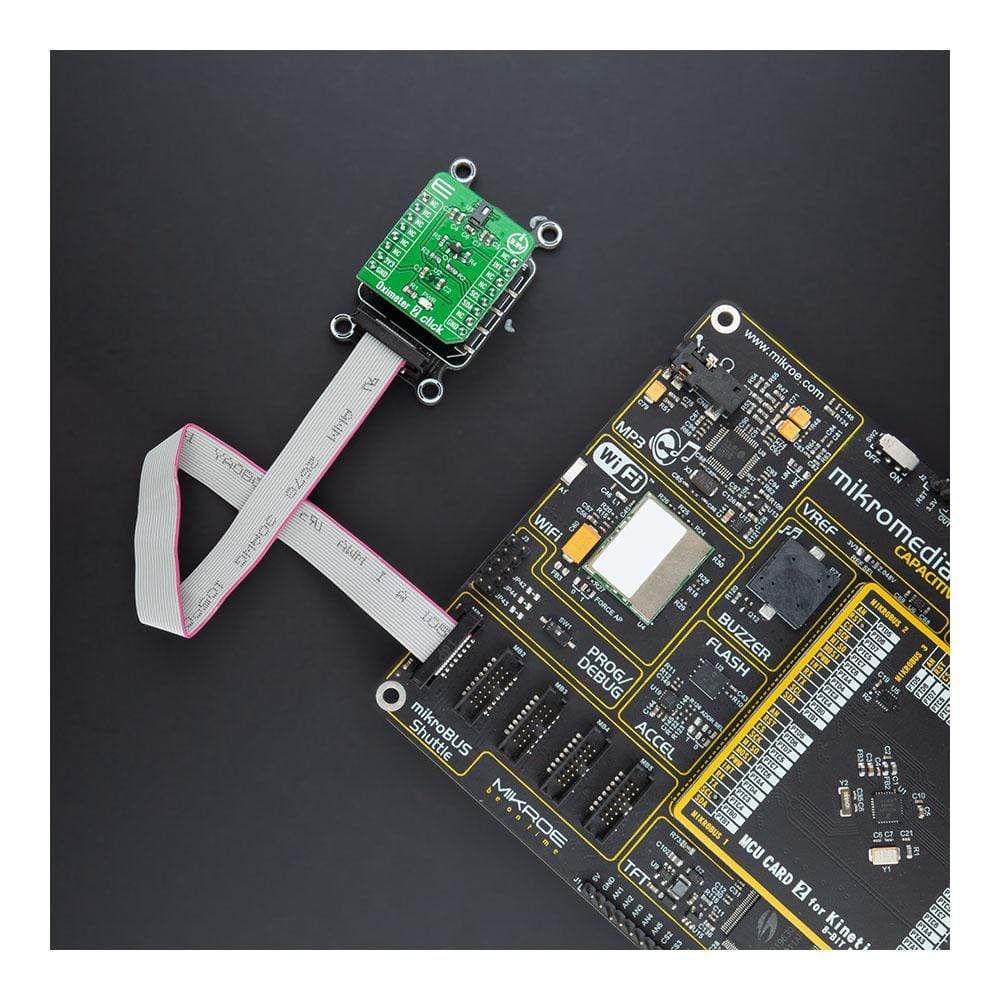
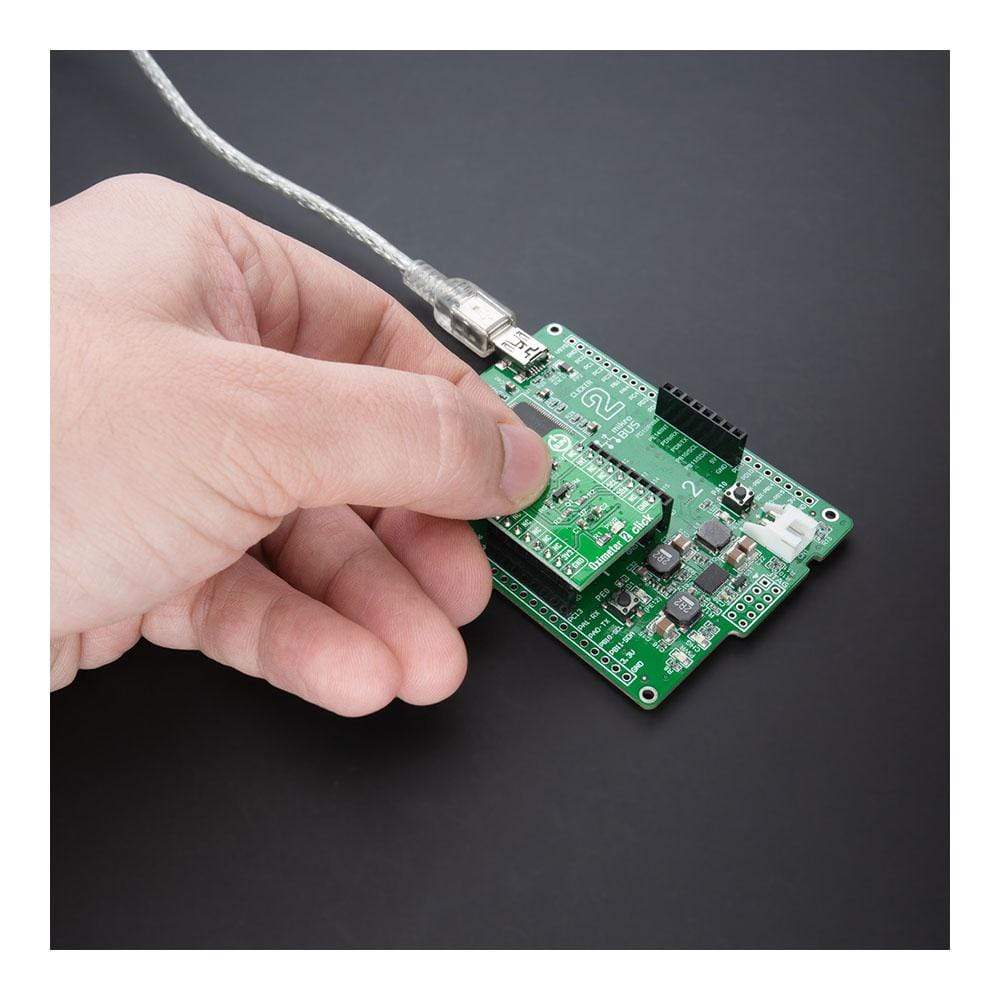
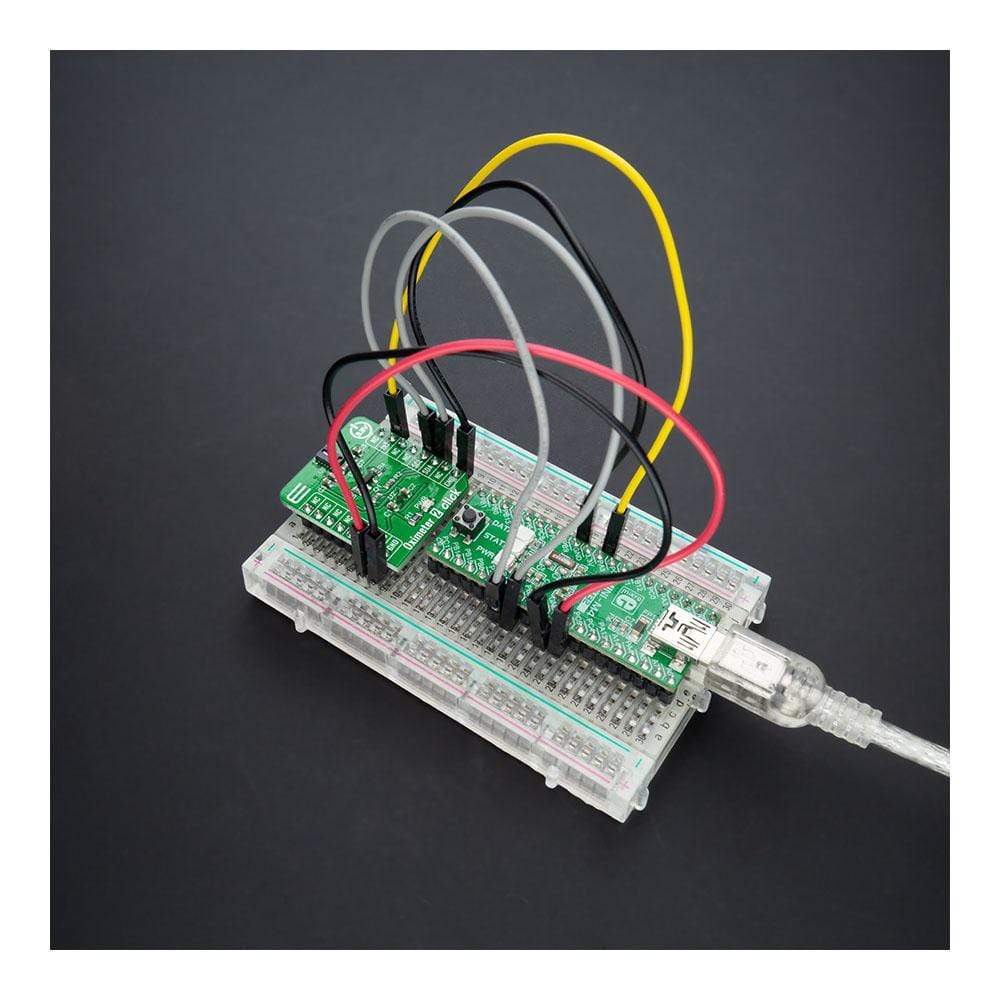
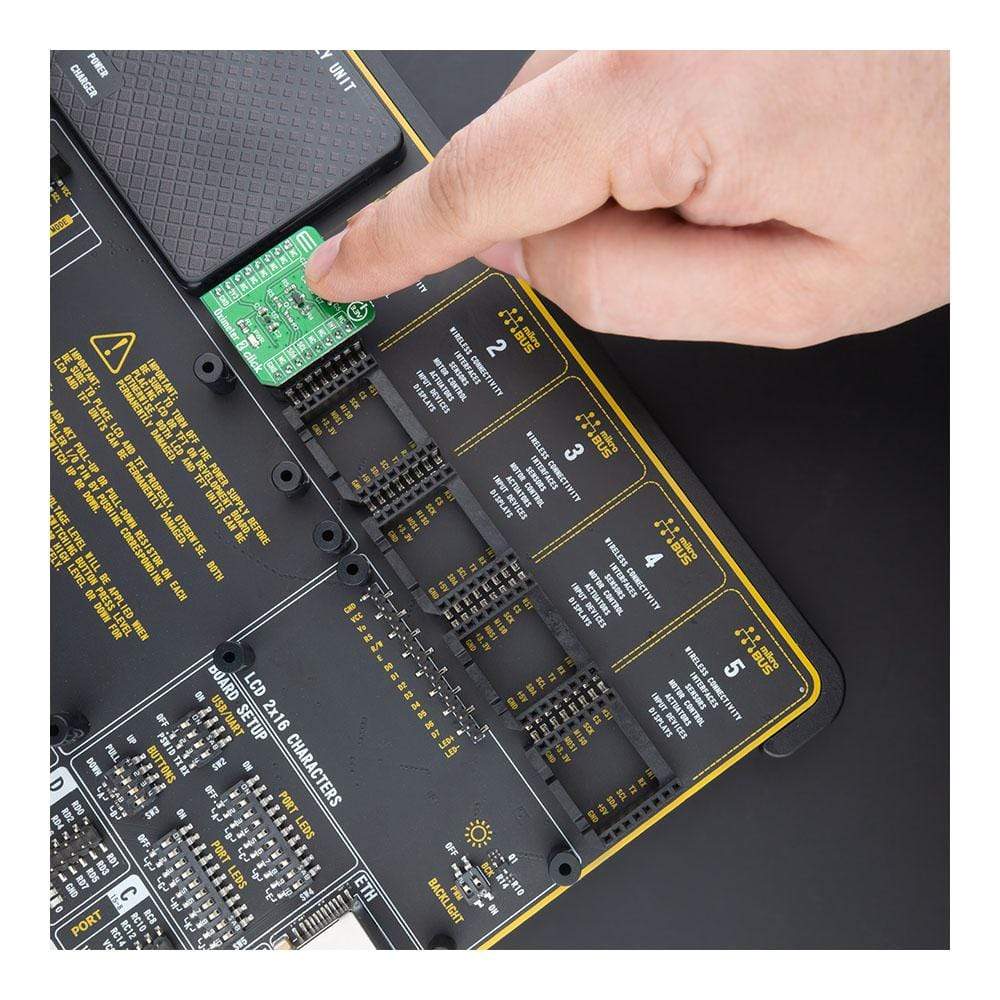
Overview
The Oximeter 2 Click Board™ is a compact add-on board suitable for measuring blood oxygen saturation. This board features the ADPD144RI, a PPG optical sensor for photoplethysmography detection of blood oxygenation from Analog Devices. It combines LED emitters and sensitive 4-channel photodiodes with a custom ASIC that provides optical isolation between the integrated LED emitters and the detection photodiodes to improve the signal-to-noise ratio (SNR). PPG detection of blood oxygenation is achieved by synchronous detection in red and infrared wavelengths. Synchronous measurement allows rejection of both DC and AC ambient light interference with low power consumption. This Click Board™ makes it an excellent choice for applications such as optical pulse oximetry and health monitoring.
The Oximeter 2 Click Board™ is supported by a mikroSDK compliant library, which includes functions that simplify software development. This Click Board™ comes as a fully tested product, ready to be used on a system equipped with the mikroBUS™ socket.
Downloads
Le L'Oximeter 2 Click Board™ est une carte complémentaire compacte adaptée à la mesure de la saturation en oxygène du sang. Cette carte est équipée de l'ADPD144RI, un capteur optique PPG pour la détection par photopléthysmographie de l'oxygénation du sang d'Analog Devices. Il combine des émetteurs LED et des photodiodes sensibles à 4 canaux avec un ASIC personnalisé qui fournit une isolation optique entre les émetteurs LED intégrés et les photodiodes de détection pour améliorer le rapport signal/bruit (SNR). La détection PPG de l'oxygénation du sang est obtenue par détection synchrone dans les longueurs d'onde rouges et infrarouges. La mesure synchrone permet de rejeter les interférences de la lumière ambiante CC et CA avec une faible consommation d'énergie. Ce Click Board™ en fait un excellent choix pour des applications telles que l'oxymétrie de pouls optique et la surveillance de la santé.
Le Click Board™ de l'oxymètre 2 est pris en charge par une bibliothèque compatible mikroSDK, qui comprend des fonctions qui simplifient le développement logiciel. Cette Click Board™ est un produit entièrement testé, prêt à être utilisé sur un système équipé du socket mikroBUS™.
| General Information | |
|---|---|
Part Number (SKU) |
MIKROE-4292
|
Manufacturer |
|
| Physical and Mechanical | |
Weight |
0.016 kg
|
| Other | |
Country of Origin |
|
HS Code Customs Tariff code
|
|
EAN |
8606027381744
|
Warranty |
|
Frequently Asked Questions
Have a Question?
Be the first to ask a question about this.

